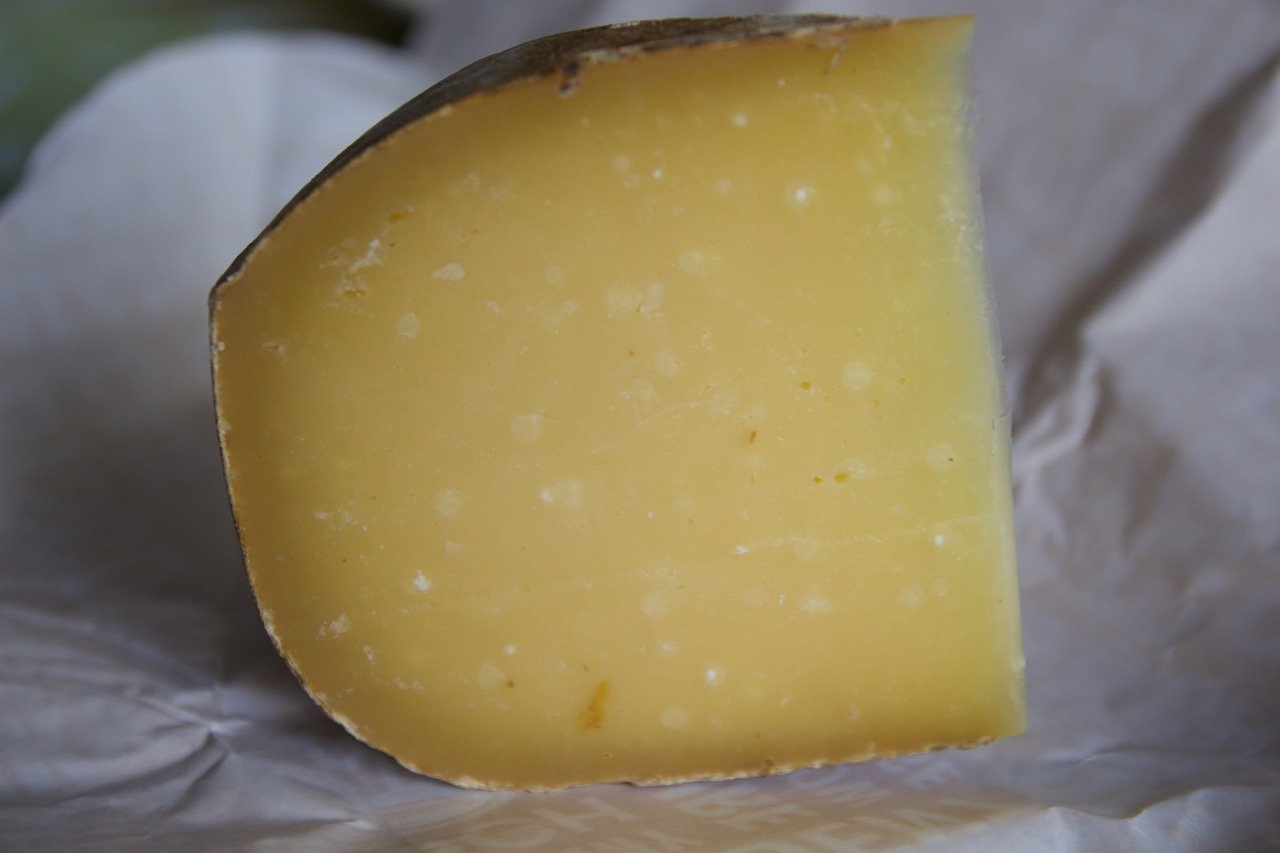I suppose you have had firm cheeses, being it alpine varieties or Parmigiano Reggiano and felt the crunch when you chew them. From the questions I am asked from time to time it seems like most of you think they are salt crystals. A most likely assumption, actually. If you look at the cheese, the white spots that oftentimes are so characteristic for this type of cheese might very well lead you to conclude they are salt crystals. Cheese as such is salty as well. But, whatever it is, it feels good and is most charming. Most will probably characterise it as a sign of quality. But this charming crunchy feel between your teeth, is it really salt crystals? Like the flake salt you put on your table?

Is it really salt crystals?
Well, to kill that myth right away, so you don’t have to read any more, I can tell you; it is not. The crunch does not come from salt crystals at all. Well then, what is it? It is crystallised amino acids. Now you’ve got yourself a nice talking point for the next dinner party, very suitable to raise when the cheese is served. Simply put: Amino acids form proteins. The crunch appears when proteins break down and subsequently crystallise. And this crystallisation happens because firm cheeses are rather low in moisture, limiting the access to water for the amino acids which again leads to this crystallisation. Tyrosine they are called. There is an other type called Leucine, but it is not very common. So it is the breakdown of proteins during maturation of the cheese that causes this. And as you probably know, making cheese is all about parting the milk protein, casein, from the whey. A process that starts when rennet is added to the milk. (Well, adding rennet to the milk is not the only way to have the milk proteins coagulate, but that is an other story).
As said, the proteins in cheese naturally break down during maturation. And just to make it clear, all maturation is about breaking down stuff. So, if it so happens that you find these crystals in a rather fresh cheese, it is more due to a fault than a wonder. Not all proteins become crystals, if that was the case all cheese matured for a certain amount of time would be full of crystals. But they are not. These tiny crystals have to merge with others to form bigger units so that we can feel them. That is one thing, and the cheese has to be rather dry in the first place so that the admission to water is restricted for the amino acids. That is paramount. But the size of the crystals is just a consequence of the process.
So why only some cheeses?
A good question of course. As mentioned above it has something to with the moisture level in cheese. But it also seems like the bacteria Lactobacillus Helveticus has something to do with it, as it has this ability to amplify the breakdown of proteins. Read more about Lactobacillus Helveticus HERE.

Do the crystals influence the flavour?
There is no evidence that that crystals have any influence on the flavour of the cheese. Since this type of cheese is well matured, their flavour is also concentrated. On the other hand, it gives the cheese a special texture, and influences very much your mouth feel. For most people I think this is perceived as positive.
Which cheeses are crunchy?
Firm alpine cheeses of course, and Parmesan style cheeses, but also Dutch Gouda as long as it is well made and matured. In addition to the varieties mentioned; look for Gruyère, Comté and Etivaz which I suppose is familiar to most. These are big cheeses, i.e. comes in big wheels, and cut in smaller pieces, so it is rather easy to notice if there are visible crystals like the Pleasant Ridge at the top picture. But it is not an absolute rule.
What about blue cheeses?
I have experienced from time to time that blue cheeses also are crunchy. Have you ever experienced that? I cannot say which, and I cannot say why they turn out crunchy. Perhaps you know? In that case I would love to know.
Thanks to Ragnhild Nordbø at Grindal ysteri, also one of two authors of the cheese making book Ysting for reviewing the text and pinpointing some confusing phrases. I am still responsible for all the content.
Post is inspired by The Courtyard dairy.